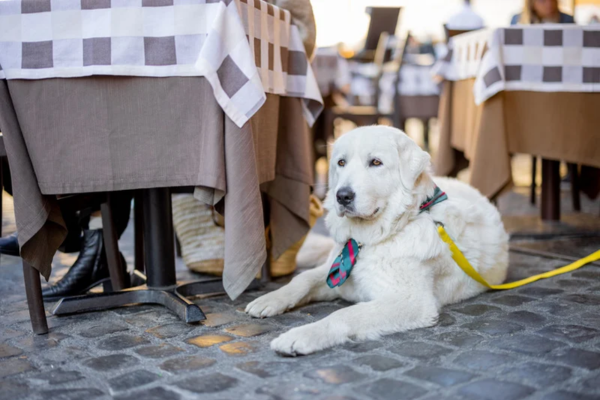Service dogs play an integral role in assisting individuals with disabilities, allowing them to navigate daily life more efficiently and independently. In the US, the Americans with Disabilities Act (ADA) mandates that service dogs must be allowed in all public spaces, including restaurants. Everyone must understand the rights and responsibilities of patrons, handlers, and restaurant staff regarding service dogs. A clear understanding ensures that individuals are met with an inclusive and respectful dining environment.
Understanding the Role of Service Dogs
Service dogs are specially trained to perform specific tasks for people with disabilities. These tasks range from guiding individuals with visual impairments to alerting those with hearing impairments, assisting with mobility challenges, or providing support to those with emotional support needs or medical emergencies. Service dogs are not pets—they are working animals trained to perform specific tasks.
Rights of Service Dog Handlers
Under the Americans with Disabilities Act, people with disabilities have the right to be accompanied by their service dogs in all public places, including restaurants. Restaurant staff are permitted to ask only two questions to determine if a dog is a service animal:
- Is the animal a service animal required because of a disability?
- What work or task has the animal been trained to perform?
Staff are not permitted to ask about the nature of the person’s disability or request any documentation under the ADA.
Responsibilities of Service Dog Handlers
Individuals with service dogs have specific rights, as well as particular responsibilities as service dog handlers:
- Control—The service dog must always be under the handler’s control. If the dog is out of control and the handler does not act to control it, the individual may be asked to leave the establishment.
- Cleanliness – The handler is responsible for cleaning up any mess the service dog leaves.
- Behavior – The service dog may not disrupt the experience of other diners or staff members.
Guidelines for Restaurant Staff Members
To ensure ADA compliance and a positive experience for all restaurant patrons, staff members should:
- Welcome Service Dogs—Service dogs are allowed in all public areas of the restaurant, just like any other patron.
- Avoid Interference—Do not pet, feed, or distract a service dog. Interference can create risks for both the service dog and its handler.
- Handle Complaints – Other diners may express displeasure with the presence of a service dog. It’s vital to address their concerns professionally and respectfully.
- Maintain Cleanliness – Ensure the dining area remains clean and safe for all patrons.
Misconceptions Surrounding Service Dogs in Restaurants
There are some common misconceptions surrounding the rules for service dogs in restaurants and their handlers, including:
Emotional Support Animals – Emotional support animals are not considered service animals under the Americans with Disabilities Act. Therefore, these animals are not entitled to the same access rights.
Identification—Although service dogs are not required to wear a vest or carry identification, many handlers choose to have their dogs wear vests or other gear to indicate their working status.
Allergies – Some patrons may note that they have allergies to dogs and ask that service animals be removed from the premises. The ADA requires that service dogs be allowed in all public spaces. Therefore, it is up to the restaurant to develop strategies to accommodate the needs of their patrons, including those with service dogs.
Service dogs are essential to the day-to-day life of individuals with disabilities. Understanding the rights and responsibilities of those involved in the ownership, management, and accommodation of service dogs is crucial to creating an inclusive environment for everyone. Ensuring awareness of ADA guidelines, restaurants, and other public establishments can ensure all guests have a positive and welcoming experience. Review our other service dog education and advocacy posts for more information about service dogs and their rights!


